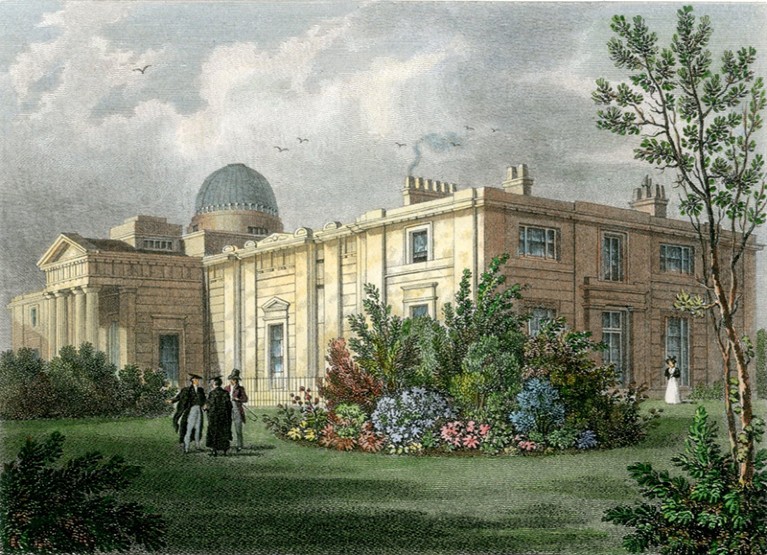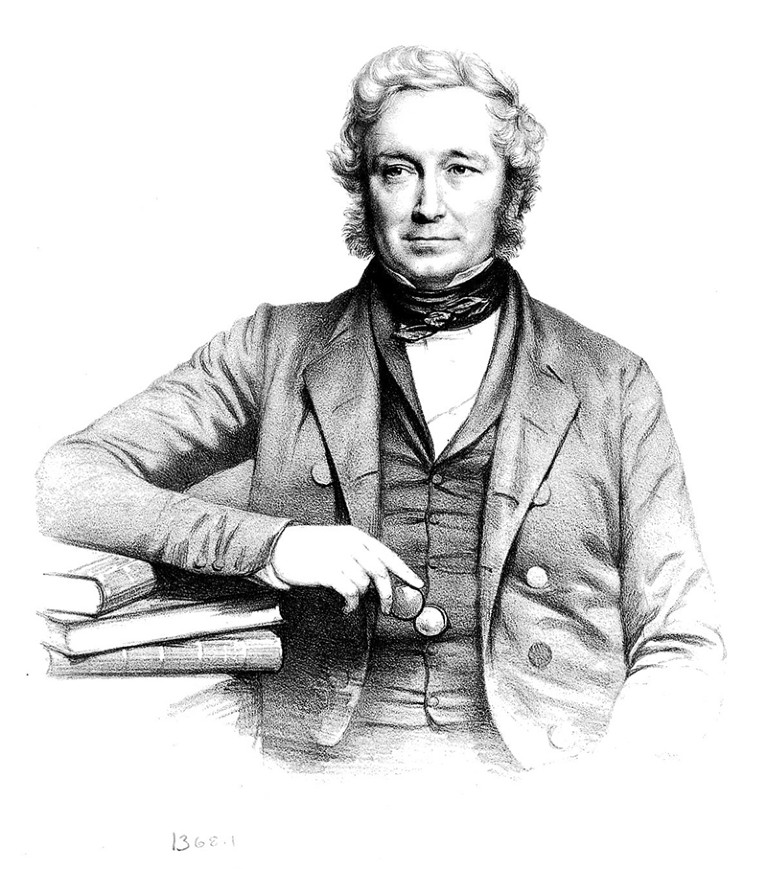
The Cambridge Observatory was founded in 1823, four years after the Cambridge Philosophical Society.Credit: University of Cambridge, Institute of Astronomy
The Spirit of Inquiry: How One Extraordinary Society Shaped Modern Science Susannah Gibson Oxford University Press (2019)
In 1873, a correspondent to this journal fretted, “Science is all but dead in England … perhaps deadest of all at our Universities.” That anonymous ‘Voice from Cambridge’ was all too justified in comparing English universities of the time unfavourably with those in Germany, for example.
Teaching and research in chemistry, physiology or experimental philosophy had long been peripheral to the activities of the universities of Oxford and Cambridge. For much of their 700-year histories, these institutions had trained young men for ministry in the church, or acted as finishing schools for their more aristocratic classmates. But things were changing. In 1873, Cambridge, like Oxford, was in the act of opening a state-of-the-art physics laboratory, and James Clerk Maxwell, the first Cavendish Professor of Physics at Cambridge, published his momentous Treatise on Electricity and Magnetism. Undergraduates at Cambridge had been able to take a three-year natural-sciences degree since 1861. What had prompted these developments?
Historian Susannah Gibson gives much of the credit to the Cambridge Philosophical Society. In her meticulously researched book, The Spirit of Inquiry, she argues that the society ultimately transformed the University of Cambridge into the world-leading centre of scientific research we know today — ranked second for natural sciences in the 2018 QS World University Rankings.
In the early nineteenth century, discoveries in ‘natural philosophy’ were becoming part of the currency of popular culture. The term ‘science’ had still to acquire its modern meaning, and ‘scientist’ was not coined at all until 1833 — by William Whewell, himself a fellow of the Cambridge Philosophical Society. Provincial philosophical societies blossomed across the United Kingdom, from Plymouth to Glasgow. They offered an opportunity for people of enquiring minds who could afford the subscription to meet and listen to talks on the latest discoveries and inventions, from fossil collections to steam-powered locomotives. Several, including those of Newcastle and Bristol, were open to women from an early date.

Naturalist John Stevens Henslow.Credit: Wellcome Collection
The Cambridge society was different. Founded in 1819 by the Woodwardian Professor of Geology at Cambridge, Adam Sedgwick, and his friend the naturalist John Stevens Henslow, the society admitted only graduates of the university. Its stated purpose was “promoting Scientific Enquiries, and … facilitating the communication of facts connected with the advancement of Philosophy”. As Gibson points out drily, it was easier to form a society to achieve these ends than to reform the university.
The society invited its fellows to fortnightly evening meetings, where they could give talks and demonstrations. These included discussion of inaugural society president William Farish’s working brass models of industrial machinery, and Edward Clarke’s announcement that cadmium — discovered a few years before — had been observed in English ores. It published its own journals, which rivalled those of London’s Royal Society, then going through a period of stagnation.
The catalogue of ground-breaking discoveries first exposed to public view at these meetings, and continuing well into the twentieth century, is remarkable. Charles Darwin wrote letters from his voyage on HMS Beagle, which Henslow read to the society in November 1835, when Darwin was in Tahiti. A wealth of physics discoveries made their debut at the society, including J. J. Thomson’s experiments in pursuit of the electron, Lawrence Bragg’s account of his law of X-ray diffraction by crystals, Charles Wilson’s invention of the cloud chamber and Rudolf Peierls’s estimate of the critical mass of uranium needed to start a chain reaction.
Active researchers at the university were almost all fellows of the society, and young fellows who shone at meetings improved their chances of landing a university post. This two-way channel opened the way for gradual reform of undergraduate teaching to include experimental science. The university began to introduce formal support for research, in the shape of laboratories, research fellowships and, eventually, postgraduate degrees. The society donated its carefully catalogued collection of natural-history specimens, including naturalist Leonard Jenyns’s extensive trove of Cambridgeshire fauna and fish collected by Darwin during his Beagle voyage, to help establish the university’s Museum of Zoology.
The society set up a system of periodicals exchange with learned societies across the world, including the American Philosophical Society and the Institute of France. It was thus able to build up a library of bound journals unrivalled in Cambridge, at very little cost. When, after financial mismanagement by an employee, the society had to sell its premises in 1866, the university provided space for the many volumes: it became the institution’s de facto science library until formally absorbed into the university library system in the 1970s.
The society’s forward-thinking ethos did not immediately extend to gender equality, although members could bring women to meetings as guests. Sedgwick tried and failed to have the mathematician and writer Mary Somerville admitted as a fellow in 1831 (R. Holmes Nature 514, 432–433; 2014). The first woman to give a paper at the society was Alice Johnson, a graduate of Newnham College who spoke on the comparative anatomy of birds and dinosaurs in 1883. Newnham had been founded for female students in 1871, and had its own laboratory. Another graduate, Anna Bateson, also presented papers, although her brother, the geneticist William Bateson, often read them in her place. In 1929, the society finally admitted women as fellows — 16 years before the Royal Society, and 19 before the university awarded women full honours degrees.
Gibson’s argument for the society’s influence is underpinned by her detailed study of its archives, catalogued in 2014. A wealth of correspondence, minute books, accounts and catalogues gives a unique, day-by-day insight into the growth of research as a professional occupation, and some of its less edifying byways. Influenced by the craze for anthropometry started by statistician and eugenicist Francis Galton, in 1886 the society set up a laboratory to measure the heads of undergraduates and others, in a misguided attempt to relate cranial size to intelligence. Cards bearing the original data remain in the archives: they were initially analysed by John Venn (of diagram fame) and later, more stringently, by the statistician Ronald Fisher.
More than once, Gibson describes the society as a “microcosm” of science at the time. The term is apt, but it is not the only instance of the author’s tendency to repeat herself, as though mistrusting her readers’ recall.
And what of the society itself? It continues to hold fortnightly meetings, now partly devoted to public engagement rather than new research, and it provides grants to early-career scientists. It has become, as Gibson writes, “just a small part of the vast landscape of Cambridge science — and that is the true mark of its success”.

 Rags, riches and Royal Society rebellion
Rags, riches and Royal Society rebellion
 Crucible of science
Crucible of science







